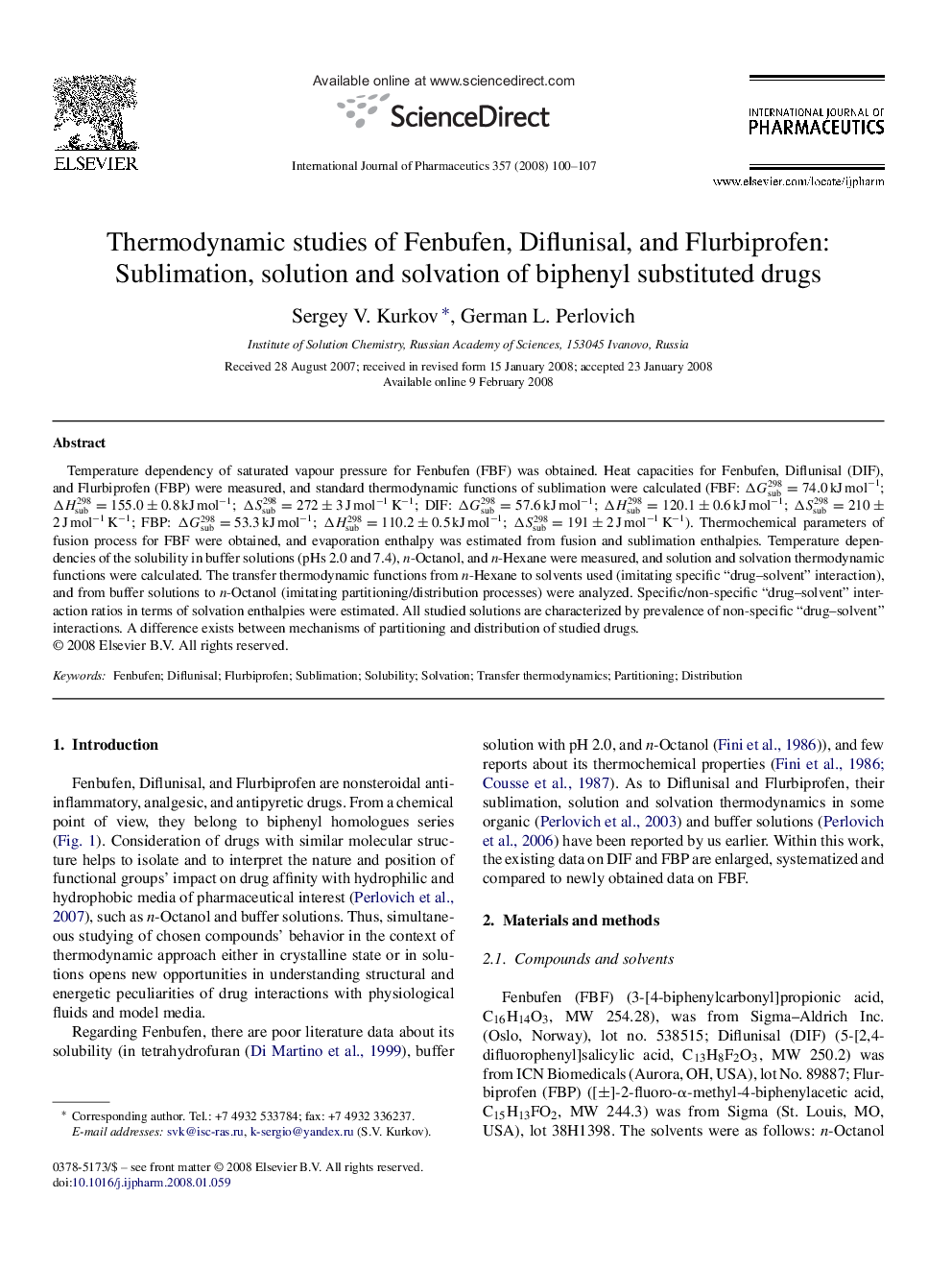| Article ID | Journal | Published Year | Pages | File Type |
|---|---|---|---|---|
| 2505298 | International Journal of Pharmaceutics | 2008 | 8 Pages |
Temperature dependency of saturated vapour pressure for Fenbufen (FBF) was obtained. Heat capacities for Fenbufen, Diflunisal (DIF), and Flurbiprofen (FBP) were measured, and standard thermodynamic functions of sublimation were calculated (FBF: ΔGsub298=74.0 kJ mol−1; ΔHsub298=155.0±0.8 kJ mol−1; ΔSsub298=272±3 J mol−1 K−1; DIF: ΔGsub298=57.6 kJ mol−1; ΔHsub298=120.1±0.6 kJ mol−1; ΔSsub298=210±2 J mol−1 K−1; FBP: ΔGsub298=53.3 kJ mol−1; ΔHsub298=110.2±0.5 kJ mol−1; ΔSsub298=191±2 J mol−1 K−1). Thermochemical parameters of fusion process for FBF were obtained, and evaporation enthalpy was estimated from fusion and sublimation enthalpies. Temperature dependencies of the solubility in buffer solutions (pHs 2.0 and 7.4), n-Octanol, and n-Hexane were measured, and solution and solvation thermodynamic functions were calculated. The transfer thermodynamic functions from n-Hexane to solvents used (imitating specific “drug–solvent” interaction), and from buffer solutions to n-Octanol (imitating partitioning/distribution processes) were analyzed. Specific/non-specific “drug–solvent” interaction ratios in terms of solvation enthalpies were estimated. All studied solutions are characterized by prevalence of non-specific “drug–solvent” interactions. A difference exists between mechanisms of partitioning and distribution of studied drugs.
